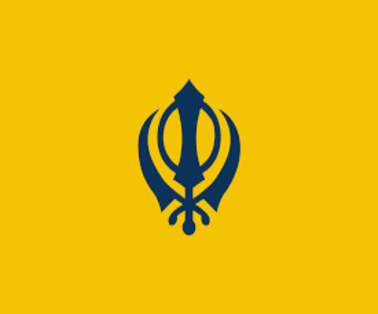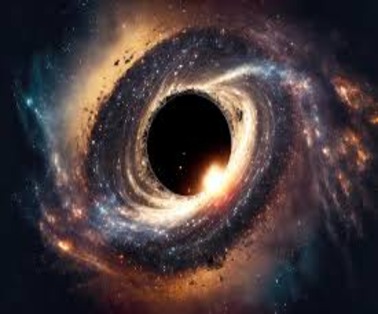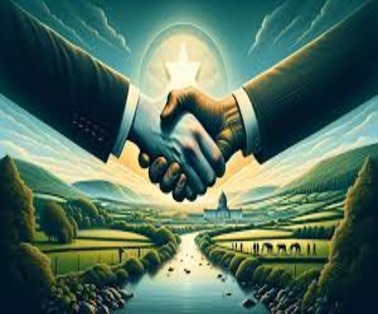Hundreds of followers of Amritpal Singh, a radical preacher and pro leader of Khalistan Movement, clashed violently with police outside Ajnala police station near Amritsar, demanding the release of one of their colleagues who had been taken into custody in an alleged kidnapping case.
Key Points On Khalistan Movement
- The Khalistan movement is a Sikh nationalist movement that wants to create an independent state for Sikh people, via armed struggle or political, inside the current North-Western Republic of India Such a state existed in Punjab from 1709 to 1849.
- The idea of Khalistan was an idea first created in 1940s, remained idle but was revived by an NRI seeking a separate homeland for Sikhs.
- In early 1980s, the movement had emerged as a major separatist movement, fed mostly by bias of Indian Government against Punjab in the case of Chandigarh and sharing of Ravi-Beas waters.
- There was intense political rivalry between Congress Party and the Akali Dal, Akali Dal was gradually gaining ground as the political representative of the Sikh community.
- Congress leadership of that time tried to divide the Akalis by propping up diverse groups of people within the Akali Dal.
- Jarnail Singh Bhindranwale led the Khalistan as an extremist movement, he was initially used by Congress to counter Akali Dal but later he was inspired by the Khalistan ideology and turned against Indian government.
- The movement was fed on arms under the patronage of Pakistan’s ISI who was seeking revenge for creation of Bangladesh.
- Bhindranwale emerged as the extremist voice of Sikhs, over-ruling the moderate voices of leaders declared himself as the protector and arbiter of Sikh rights and acquired arms.
- Demands for separate nationhood for Punjab was carried out through violent protests and killings of high-profile persons in Indian government.
History Of Khalistan movement
- 1947 Partition of India was not a joyful event for Sikhs, partition left Sikhs in a lot of discontentment with regard to their traditional lands being lost to Pakistan.
- In November 1966, Punjab was divided into Punjab and Haryana making Chandigarh a union territory and the capital of both states.
- In October, 1973, the Anandpur Sahib Resolution demanded a greater degree of provincial autonomy and this resolution provided the base for Khalistan.
- They demanded for an amendment to be made to the Indian constitution and for Chandigarh to be made the exclusive capital of East Punjab, Punjabi speaking areas of neighboring states be made part of East Punjab and also for the declaration of Amritsar as the holy city.
- On March 20, 1981, a group of Sikhs initiated a procession at Anandpur Sahib and demanded Khalistan.
- Later governments in East Punjab failed to implement the Anandpur Resolution which led to the rise of radical Sikh groups and Jarnail Singh Bhindranwale emerged as leader. His aim was to revive the Sikh traditions of martyrdom.
- In 1981, the chief Khalsa Dewan, during 54th Sikh Educational Conference at Chandigar, passed a resolution that demanded a free Khalistan to include areas of Punjab, part of Haryana, Rajasthan and Jammu.
- The Sikhs who migrated to the West, US, Canada and UK also demanded a separate Khalistan and Dr. Jagjit Singh Chauhan is the biggest spokesman of Khalistan movement.
- From 1978 to 1992, the Sikhs living overseas campaigned extensively for a separate homeland Khalistan.
- Talks with Bhindranwale failed as every time Indira’s government backed out to support the Hindus.
- Bhindranwale made Akal Takht as his command in the headquarters with his armed men to protect Guru Granth Sahib. The demand for a Sikh nation was popularised under Bhindranwale.
Operation Blue Star
- The congress government under Indira Gandhi planned operation Blue Star to eliminate Sikh leaders and their followers in the Golden Temple which started on June 1, 1984.
- One of their holiest shrine was also stormed by thousands of Indian army soldiers against 500 militants.
- During the operation, the entire population of Punjab was put under siege. 10,000 pilgrims and 1300 workers were trapped inside the Golden Temple.
- The operation resulted in the death of Bhindranwale.
- The Indian army suffered 700 deaths with hundreds injured. As a result of the operation on October 31, 1984, the Sikh body guards shot dead the Prime Minister Indira Gandhi.
- The assassination triggered backlash against Sikhs across India.
- From early 1980s to early 1990s, Punjab went through a phase of wide-spread terrorism.
- Manifold extremist groups like the Khalistan Liberation Force, Khalistan Commando Force, Babbar Khalsa and umpteen others gained prominence and roamed around freely across Punjab.
- Sikhs being a patriotic group started to act against the protracted terrorist struggle and chose to side with the Indian nation, the then Punjab Police department succeeded in defeating the movement in 1990s.
Status Of Khalistan movement
To Download Monthly Current Affairs PDF Click here
Click here to get a free demo
Everything About CLAT 2025




